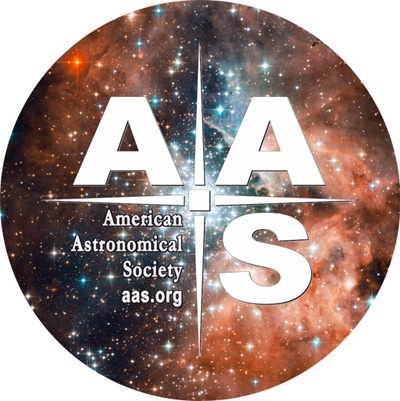2 September 2020
Susanna Kohler

Numerical simulation of two black holes that inspiral and merge, emitting gravitational waves. [N. Fischer, H. Pfeiffer, A. Buonanno (Max Planck Institute for Gravitational Physics), Simulating eXtreme Spacetimes (SXS) Collaboration.]
Been waiting for new signals to be parsed from LIGO/Virgo’s third observing run data? Wait no longer! The latest detection announced in Physical Review Letters and The Astrophysical Journal Letters is big news — both figuratively and literally. The two black holes that merged in GW190521 are the most massive we’ve observed yet, and this has major astrophysical implications.

The Signal
On May 21, 2019, the LIGO/Virgo gravitational-wave observatories detected a strong signal in all three of their detectors.





After the conclusion of the observing run and careful analysis of the waves, the collaboration is now announcing GW190521 as an official detection of the inspiral and merger of two extremely massive black holes.
This signal is unique, record-breaking, and extremely intriguing for two reasons. First, the final product of the merger is ~142 times the mass of the Sun, which places it firmly in the category of elusive intermediate-mass black holes. And second, the two merging black holes had masses of ~85 and ~66 solar masses, which virtually guarantees that at least one of them falls into the so-called pair-instability mass gap.
A Decidedly Intermediate Size
Let’s unpack these things, starting with the final product.
The black holes astronomers have thus far observed in the universe fall into two primary categories: stellar-mass black holes (on the order of ~10 solar masses), and supermassive black holes (millions to tens of billions of solar masses).
Intermediate-mass black holes (IMBHs) should exist as a bridge between the two, spanning the range of 100–100,000 solar masses. Until now, however, evidence for these bodies has been slim: only a few candidates, all with masses at the upper end of the IMBH mass range, have been identified.
The detection of GW190521’s 142-solar-mass final product therefore marks a major discovery in a black-hole-mass desert. It confirms not only that IMBHs do exist, but also that they can be formed by the merger of two smaller black holes.

Illustration of the steps of a hierarchical merger, in which four stellar-mass black holes combine in pairs to eventually form a single, large black hole. [LIGO/Caltech/MIT/R. Hurt (IPAC).]
Polluting the Mass Gap
Stellar-mass black holes form when a massive star evolves and collapses at the end of its lifetime. But there’s an instability that’s thought to get in the way for some stars, expelling mass and preventing black holes of a certain range of masses from forming.
This forbidden pair-instability mass gap lies roughly between 65 and 120 solar masses — and yet the masses of the merging black holes in GW190521 fall squarely within that range!
How can this be? The LIGO/Virgo collaboration outlines a few possible ways to defy the mass gap:
1.Second-generation black holes.
Black holes that formed from the merger of two smaller black holes (instead of from the collapse of a star) can lie within the mass gap. GW190521 might be the result of four stellar-mass black holes undergoing progressive hierarchical mergers to eventually form an intermediate-mass black hole.
2.Stellar mergers in young star clusters.
In some scenarios, the merger of an evolved star with a main-sequence companion can create a giant star with an oversized envelope. This type of star could collapse directly into a black hole that lies in the mass gap.

Artist’s illustration of two merging black holes embedded in the gas disk surrounding a supermassive black hole. [Caltech/R. Hurt (IPAC).]
3.Black-hole mergers in the disks of active galactic nuclei
The disk of material that feeds the supermassive black hole at the center of an active galaxy may host tens of thousands of stellar-mass black holes. Trapped in the disk, these smaller black holes can more efficiently accrete material and merge, providing an avenue for rapid growth into mass-gap sizes.
Going Forward
We can’t yet be sure whether GW190521 represents a new kind of black hole binary, or if it’s simply the upper-mass end of the population we’ve already observed. But this will soon change, as upgrades to the LIGO/Virgo network’s sensitivity should allow for the detection of several hundreds of mergers per year, reaching ever higher redshifts. And next-generation ground- and space-based detectors will soon provide an additional perspective.
With the surprising discoveries of GW190521, one thing is clear: the paradigm shifts from gravitational-wave astronomy are only just beginning.
Citation
“Properties and Astrophysical Implications of the 150M☉ Binary Black Hole Merger GW190521,” Abbott et al 2020 ApJL 900 L13.
https://iopscience.iop.org/article/10.3847/2041-8213/aba493
See the full article here .

five-ways-keep-your-child-safe-school-shootings
Please help promote STEM in your local schools.

AAS Mission and Vision Statement
The mission of the American Astronomical Society is to enhance and share humanity’s scientific understanding of the Universe.
The Society, through its publications, disseminates and archives the results of astronomical research. The Society also communicates and explains our understanding of the universe to the public.
The Society facilitates and strengthens the interactions among members through professional meetings and other means. The Society supports member divisions representing specialized research and astronomical interests.
The Society represents the goals of its community of members to the nation and the world. The Society also works with other scientific and educational societies to promote the advancement of science.
The Society, through its members, trains, mentors and supports the next generation of astronomers. The Society supports and promotes increased participation of historically underrepresented groups in astronomy.
The Society assists its members to develop their skills in the fields of education and public outreach at all levels. The Society promotes broad interest in astronomy, which enhances science literacy and leads many to careers in science and engineering.
Adopted June 7, 2009
